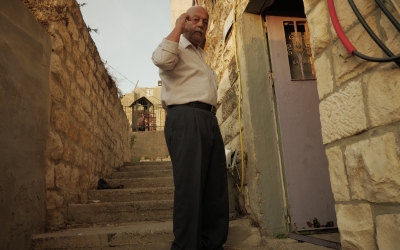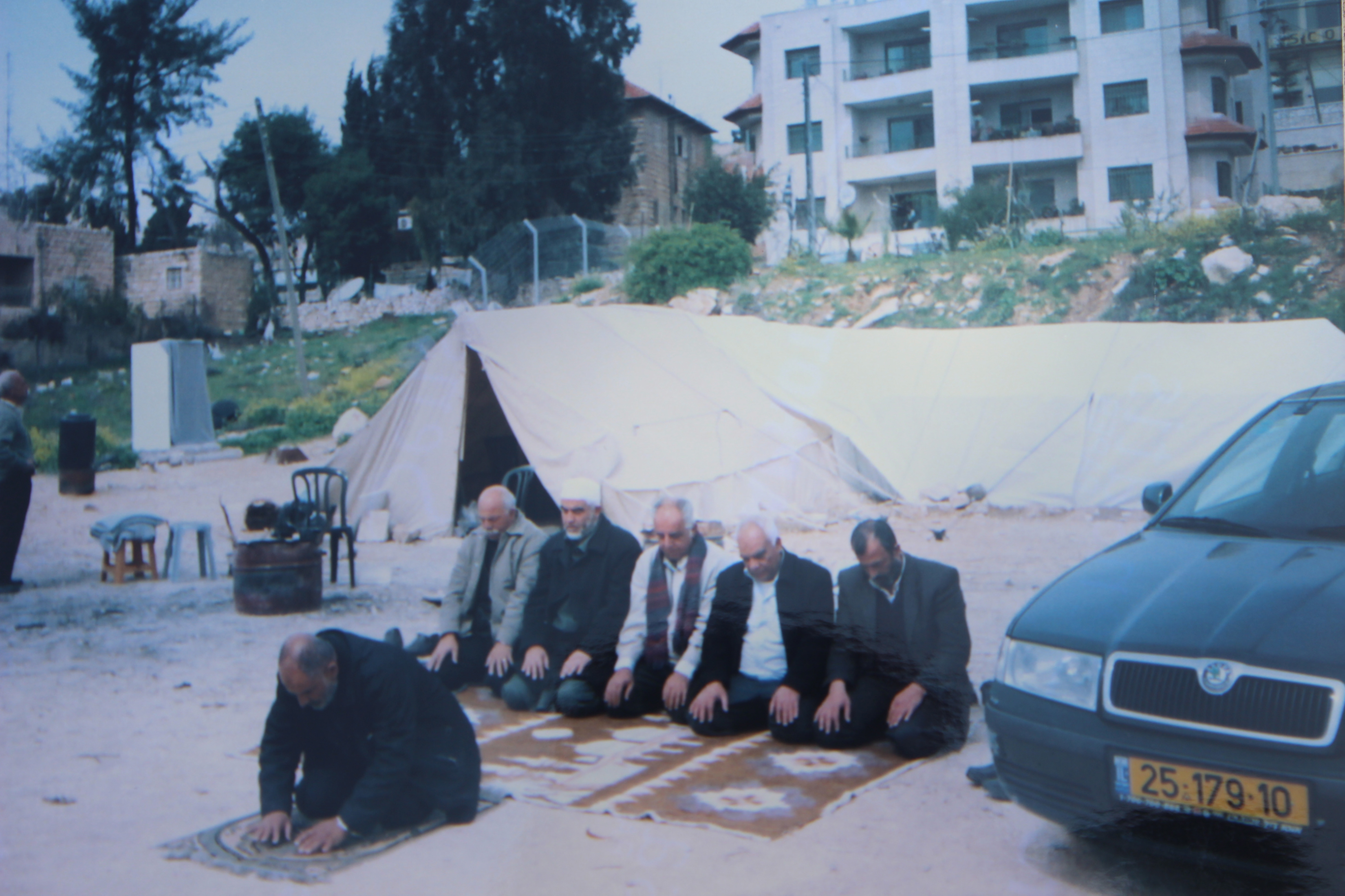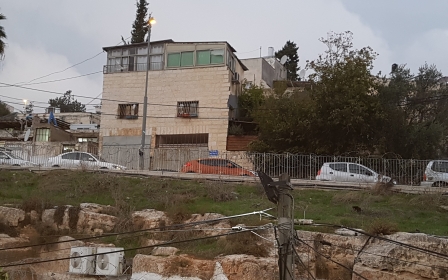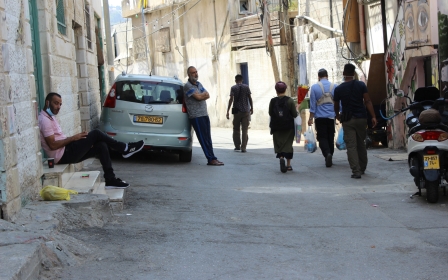Save Sheikh Jarrah: The online campaign giving hope to Palestinian refugees in East Jerusalem
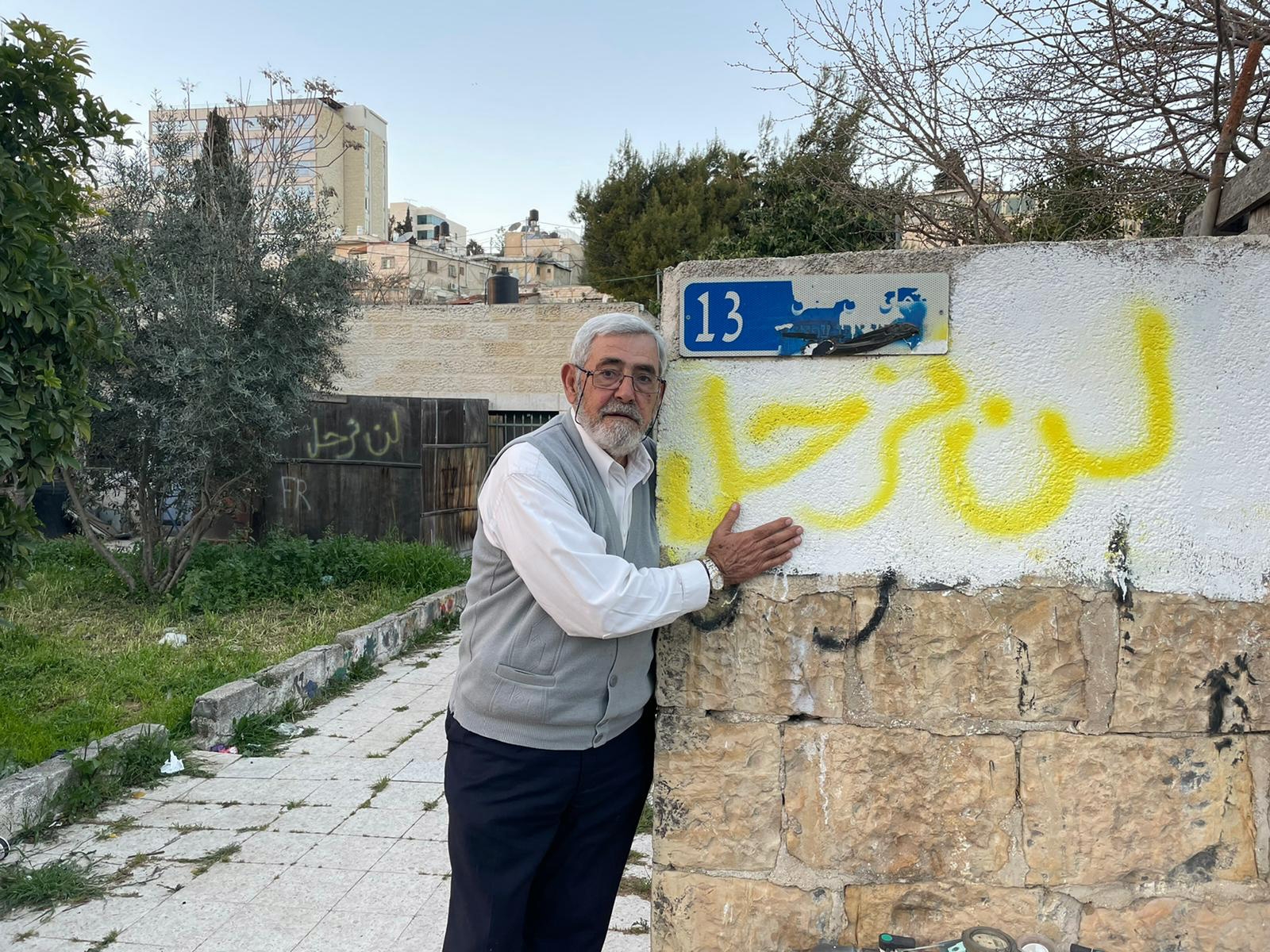
At first glance, everything looked seemingly normal in Karm al-Jaouni in the Sheikh Jarrah district, but the clamour of gathering news outlets and legal institutions last week told another story of a neighbourhood in turmoil.
The Sheikh Jarrah district is inhabited by refugees who were expelled from their towns and villages by Zionist militia during the Palestinian Nakba (Catastrophe) in 1948. But due to Israel’s push to populate the area with Israeli settlers, Palestinian residents are now, once again, facing the spectre of expulsion.
In an effort to garner international support, activists launched an online campaign, #SaveSheikhJarrah, in Karm al-Jaouni on Monday to help save the residents, who have lived in the neighbourhood for decades, from forcible removable, which many of their neighbours have already endured.
Nabil al-Kurd, a 70-year-old Jerusalemite and resident of Karm al-Jaouni, sees the campaign as a glimmer of hope that could help him retain his current home, and avoid reliving the experience of having been forced out of his family house in Haifa in 1948.
New MEE newsletter: Jerusalem Dispatch
Sign up to get the latest insights and analysis on Israel-Palestine, alongside Turkey Unpacked and other MEE newsletters
“We want to relay our voices to Jordan, the Palestinian Authority, the United Nations and international law organisations because all these parties are involved in our issue, which has certainly reached the level of war crime,” he said.
In 1956, the Jordanian government, together with the UN agency for Palestinian refugees, reached an agreement to settle these families in Jerusalem in return for their UNRWA documents.
Some 28 families were selected and provided with housing units, built by the Jordanian government, for three years, after which the ownership of the property will be automatically theirs. The lease contracts expired in 1959 and the residents became the owners of the property.
'Their dogs attack us, their trash floods the entrance, they have killed the trees and turned the house into ruins'
- Nabil al-Kurd, resident
However, after the occupation of Jerusalem in 1967, with the eastern part of the city coming under Israeli control, the inhabitants of Sheikh Jarrah district were taken by surprise when two Jewish committees registered their ownership of the 18-dunums of land at the Land Department in 1972.
Thereafter, dozens of judicial cases were raised in Israeli courts, as the 28 nuclear Palestinian families expanded and the number of residents facing eviction in favour of settlers rose to around 600 Palestinians.
In 2019, lawyer Sami Ershied told MEE that Sheikh Jarrah eviction cases are discriminatory because the legal procedures do not take into account that East Jerusalem is an occupied territory.
Under international law, an occupying state cannot forcibly transfer residents of occupied territories because it has an obligation to preserve the demographic composition of the inhabitants.
Another point of contention has been claims made by religious Israelis that a sacred shrine belonging to Shimeon al-Siddiq (founder of the Israelite Tribe of Simeon) is located in the heart of the Karm al-Jaouni district.
Palestinian residents refute this claim, asserting that the shrine is Islamic, and known as the saint Saad al-Din Hijazi, who was buried there 400 years ago, and that “Ottoman maps” prove their narrative.
Relentless harassment
Al-Kurd’s experience with the Israeli occupation is a flagrant example of Palestinians suffering at the hands of settlers.
In 2001, he built a house adjacent to the one he already had, only for Israeli occupation authorities to confiscate the keys to the new house, just four days before he was planning to move in. In 2009, settlers came and occupied the house, turning Kurd’s life into hell.
At the time, al-Kurd erected a tent at the entrance of the house where Palestinian, European and Jewish activists came to demonstrate their support. Settlers harassed the activists by spraying them with spoiled milk, hitting them with rotten fruits, vegetables, and waste and setting rodents on them while they slept.
Five years later, the settlers set fire to the tent and burned it down, but the harassment of the family did not stop, even after the sit-in ended.
“Settlers would take their clothes off and stand at the windows overlooking our home. I had to hang a fabric barrier to protect my wife and daughters,” Nabil said.
“Their dogs attack us, their trash floods the entrance, they have killed the trees and turned the house into ruins.”
Since his retirement several years ago, this elderly Jerusalemite has divided his time between keeping an eye on settlers, lest they suddenly attack his family, and countering the Israeli judicial system.
The Israeli district court has recently issued a verdict giving al-Kurd a grace period to vacate his house before May.
Al-Kurd said that although the settlers lack any proof of ownership of the land, they are adamant to evacuate its residents in accordance with the Judaisation policies in occupied East Jerusalem.
Residents of the neighbourhood, he said, have had no means of defending themselves except resorting to the law, but that avenue has been marred with challenges as the judicial system has repeatedly shown bias toward the settlers.
‘I did not surrender’
The online campaign, which has been trending in both Jordan and Palestine, has given hope to Fawziah al-Kurd, who was forcibly removed from Karm al-Jaouni in 2008, that an international campaign would stop Israel from expelling these refugees for a second time, and allow her to return to her neighbourhood.
Fawziah, who is better known as Um Kamel al-Kurd, said that although it has been 13 years since she was forced to leave, she still visits the place three times a week.
She said she passes by her house, which is currently occupied by settlers, as a show of resilience and to reiterate her refusal to abandon it.
“I lived in the house for 40 years, the last five of which were the hardest because Israelis took half of my house by force before practically throwing me out on the street along with my ailing husband,” Fawziah told MEE.
“Despite all of this, I did not surrender and I lived in a tent adjacent to my house for a whole year.”
Save Sheikh Jarrah
One of the coordinators of #SaveSheikhJarrah, Karmel al-Qasim, who lives in the area, said that his family was given until early May to vacate their house in which they have been living since 1956.
'Our one and only demand is to let us live peacefully in our homes just like any normal family anywhere in the world'
- Karmel al-Qasim, resident
He pointed out that the goal behind the campaign is to convey the voice and the suffering of Karm al-Jaouni residents to the whole world and generate international political pressure to stop the displacement and dispersion of its inhabitants, once again.
“Our one and only demand is to let us live peacefully in our homes just like any normal family anywhere in the world, without the threat of eviction and displacement,” Qasim said.
“Through the #SaveSheikhJarrah campaign, we call upon UNRWA and Jordan to assume their legal and moral responsibilities toward us because we have been living here in compliance with an agreement that both parties reached in the 1950s.”
Karmel said he will not abandon his right to resist the policy of eviction and will continue to follow in the footsteps of his late mother Amal al-Qasim, a refugee who was expelled from Jaffa in 1948.
He, along with his brothers and sisters, intend to stand fast in their neighbourhood, which is strategically located near the Old City of Jerusalem.
Aref Hammad, a member of Sheikh Jarrah Refugees Housing Units Committee, told MEE that the Skafi, Qasim, al-Kurd, al-Jaouni, Hammad, al-Daoudi and al-Dijani families are in the process of filing an appeal to the Israeli Supreme Court, in a last push in the legal recourse against the eviction verdicts recently issued by the district court.
Hammad said that 169 residents of the neighbourhood have received orders to vacate their homes, including 46 children from 12 different families.
This article is available in French on Middle East Eye French edition.
Middle East Eye delivers independent and unrivalled coverage and analysis of the Middle East, North Africa and beyond. To learn more about republishing this content and the associated fees, please fill out this form. More about MEE can be found here.



